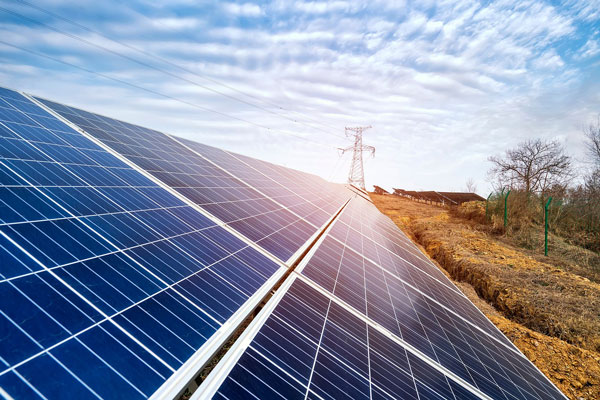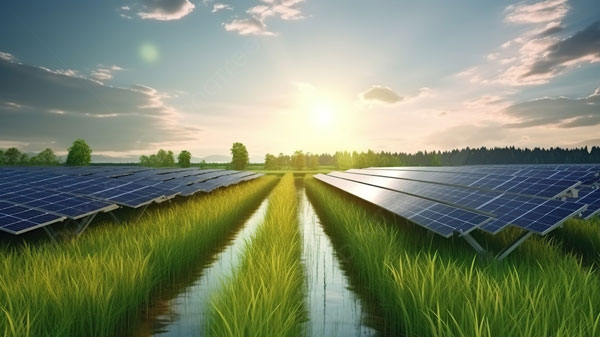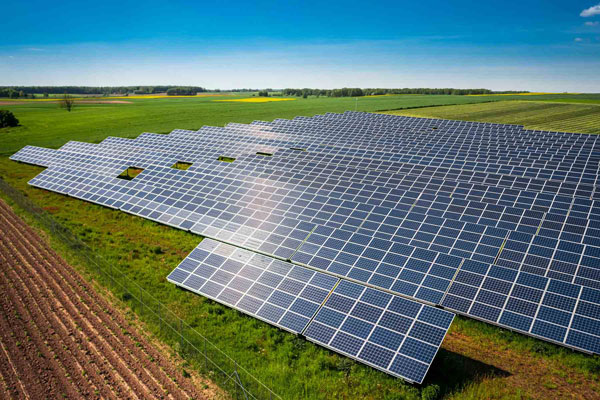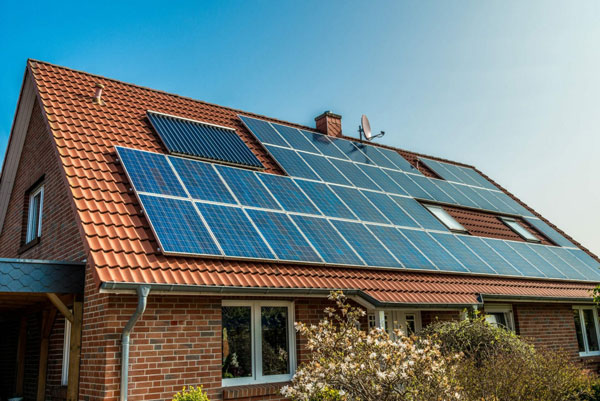Evaluate energy needs, panel efficiency, cost, manufacturer reputation, installation requirements, and durability for optimal commercial solar investment.
Understand Your Energy Needs
Determine your current and future energy needs of your business. They consume between 15000 to 30000 Kwh per month in general. The first step is reviewing your energy bills for a month and learning when the highest prices for the energy you use is. Benchmark Your Energy Use: Leverage Tools such as the Energy Information Administration's (EIA) Commercial Building Energy Consumption Survey For example, a factory may require more energy during its operational hours, whilst for an office building, peak energy use may occur throughout its traditional working hours. Understanding your emergy requirements exactly guarntees that the solar system you purchase is designed to provide for your patterns of consumption.
Checking Power Consumption
Start by analyzing how much energy you currently use. Get your 12-month utility bills to see what your average monthly and annual usage is. A small business might use 20,000 kWh per month, as a point of reference, while a larger manufacturing plant might consume as many as 100,000 kWh. This data helps establish your solar system's production requirement, or how much energy your solar system must produce.
Identifying Peak Usage Times
The times that you use energy the most can drastically affect your energy requirement Types of industries that may have higher consumption at specific hours or times of year For instance, a retailer may experience peak demand at their outlets during business hours and over the summer as a result of additional air conditioning requirements. This information is helpful in designing the solar system such that it is capable of handling peak load needs optimally.
Future Energy Requirements
Think about the growth strategies of the business and future energy usage trends. Energy usage is likely to grow by around 5-10% a year for a growing business New equipment, new facility, or extended hours of operation For instance, if you are planning to build a new production line, it is also necessary to determine that the additional power demand has to be covered by your solar system.
Using Energy Audits
Hire a pro for an energy audit to get a good overview of the energy you use. From lighting and HVAC systems to machinery, auditors analyze everything and offer a detailed recommendations. See if you can extract any further details from the Department of Energy; the last we checked, energy audits have uncovered savings of as much as 20% when it comes to your energy bills. By following these suggestions, you can also decrease the scale and cost of installing solar for you home.
The true situation
Lower energy consumption: Widely known for its efficient data centers, Google has been increasing the energy efficiency of the servers in them. Google tracks its energy usage down to the minutest level of the granular power distribution slab and has an industry-leading power usage effectiveness (PUE) factor of about 1.12 - as compared with standard industry practices looking at PUEs of 1.67 or more. Their careful work with system design in order to satisfy an exact amount of energy needs is also of significance.
Tools and Resources
Go a step further-in addition to the readings, stay on top of trends in consumption by using energy management tools and software to continuously monitor and analyze energy use. Tracking energy use, establishing goals and measuring progress can be done with tools such as Energy Star Portfolio Manager. According to the EPA, companies using Energy Star tools achieve an energy savings of 2-3 percent each year.
Evaluate Panel Efficiency
Panel efficiency is critical, particularly in constrained installation space. Monocrystalline panels come in the region of 15-20% efficiency, whereas polycrystalline panels come in at around 13-16%. That difference allows monocrystalline panels to produce more power per square foot, and hence they are recommended for rooftops or where space is limited.Importance of Efficiency
It also affects how many solar panels you have to buy and the overall energy yield. A business with a 10,000-square-foot rooftop may be able to house around 300 monocrystalline panels capable of producing up to 90,000 kWh each year. This same space would only produce apx 78,000 kWh if polycrystalline panels were used, a bad example I know but exaggerating to demonstrate point. In the words of the leading solar marketplace, Energy Sage: “The efficiency is the most important factor to consider when comparing a solar investment to your utility bill.Efficiency of Monocrystalline vs. Polycrystalline
Monocrystalline panels have a single crystal structure so that electrons can move more easily from one side to the other, hence they are more efficient. This translates to an efficiency ratio of between 15-20-percent efficiencies. Polycrystalline panels on the other hand are comprised of several silicon crystals, contributing to more resistance and a bit less efficiency, coming from 13% to 16%.Implications on space and energy throughput
Efficiency also allows you to produce the same amount of energy in a smaller area with fewer solar panels, which can be incredibly helpful if you have a small roof space to work with. In the case of the business needing to produce 100,000 kWh annually, you may require 333 monocrystalline panels, vs. 385 polycrystalline panels to attain the same output.The true situation
Solar Installations by Walmart: To make the most of the limited rooftop space, Walmart has fixed monocrystalline panels which lead to large savings in energy and a reduction in their carbon footprint. Solar FarmThe company uses high-efficiency monocrystalline panels in their solar farms, lowering the amount of space needed to produce power, which, in turn, matches up with its commitment to making everything running on renewable energy.Cost vs. Efficiency
Increased efficiency is frequently accompanied by increased upfront costs. The range for monocrystalline panels is $0.50-$1.00 per watt, and polycrystalline panels are typically $0.40-$0.80 per watt. While monocrystalline panels might be your more expensive option they have higher efficiency with larger cost savings over time by requiring fewer panels and getting the most energy out of the space you have available.Choosing the Right Efficiency
When choosing panels, you must take into account what their efficiency ratings are and scale that in terms of your energy usage and the spatial considerations at your site. But, what if your business is in an urban area where rooftop space is at a premium and you want to get more energy out of each panel- it is here where investing in higher efficiency monocrystalline panels pays off. In that regard, polycrystalline panels might be a better price if you have many space - and no budget constraints.
Consider Cost
It is essential to be clear on the costs of planning a commercial solar installation. Your project's financial viability will depend on the initial investment, as well as long-term savings, and any incentives that are available.
Initial Investment
Solar panels vary widely in terms of type and efficiency, which has a direct impact on the upfront cost. Monocrystalline panels: $0.50 to $1.00/watt Polycrystalline panels: $0.40 to $0.80/watt This could equate to an upfront investment of between $40,000 to $100,000 for a 100kW system. SolarReviews said ''Initial cost vs. long-term savings is a critical balance.''
Installation Costs
Mounting services, electrical components, necessary structural improvements to a building all contribute to installationESSAGES It might undeniably be great to meet 2,50 $ per watt, but it is more like 4,00 $ per watt with installation. Well, we are talking about a 100 kW system and now we have to add that to the cost of moving swiftly to $400,000 to $500,000 ( 100 kW system) or in other words, installation costs of $250,000 to $400,000. The expense saved by hiring experienced installers will easily override the amount mistakes end up costing you and how inefficient the system may end up running.
Long-Term Savings
Yes, solar can have high up-front costs, but it can also provide excellent long-term savings in the long run. Up to 75% on energy bills businesses can save by installing solar panels. So, a business that has $90,000 in annual electricity bills could be that helps you save that entire quantity for example $10,000 per thirty days on electricity expenses decreases to $2,500, saving $90,000 per year. Over a 25-year lifecycle, that number balloons to over $2 million in savings.
Available Incentives
Enjoy the incentives provided to lessen the overall price of your solar setup. Federal Investment Tax Credit (ITC) - Businesses can deduct 26% of the cost of installing a solar energy system from federal taxes. This benefit alone can reduce a $100,000 system by $26,000. Furthermore, several states provide rebates, tax credits, and other incentives. Consult your specific location in the Database of State Iincentivess for Renewables & Efficiency (DSIRE).
Financing Options
Look into other financing possibilities so that you can deal with the costs included upfront. Power Purchase Agreements (PPAs) and solar leases where publicly funded grants for solar leases allows business to have solar panels installed for minimal up-front cost in this article. The U.S. commercial solar market relies on solar power purchase agreements (PPAs) and leases to fund nearly 50% of installations, says the Solar Energy Industries Association (SEIA). These now appear marginal goal possibilities, but in the 1970s and 1980s, they were significant accomplishments while benefiting from the system in a financial sense.
Cost Comparison
Example of built environment target: A retail chain with several sites installs 500 kW solar system per site (distributed_force entry) For monocrystalline panels, perhaps as high as $2 million, including installation per site, she said. In the case of polycrystalline panels this would cost $1.8 million. In 25 years, monos high efficiency could save an extra $500,000 per site, making the initial larger investment less punishing.
Return on Investment
Use an ROI estimator to find out if your solar installation is a financially feasible project. By the 4 to 7 year mark, a commercial solar system is average to paid off. To give you a practical example, let's imagine a system that costs $500,000 and yields annual energy bill savings of $75,000, the payback would be around of 6.7 years. From this point forward, each dollar the local company does not pay to the utility represents profit.
Check Manufacturer Reputation
Selecting a reliable manufacturer is so important for the quality and reliability of your solar panels. The manufacturer reputation can affect the quality of your solar investment and is therefore something to look into!Research Brand Reliability
First things first, research the reputability of various solar panel manufacturers. Select from well-known brands that have been around for a long time with a proven history of good quality products SunPower is one such company with over three decades of experience in the solar industry, and is widely-recognized for its super high efficiency panels and strong warranty packages.Reviews & Testimonials by Customers
Based on reviews from customers and testimonials, we have put together a list of the best-performing solar panels.. SolarReviews EnergySage to get clicking opinions from customers Look at any repetitive problems or praises in the reviews. Many people sing the praises of SunPower, for example, on its durability and customer service, whereas other new brands may have mixed feedback.Warranty and Support
Good warranties show the manufacturer is confident in their product. SunPower also provides a 25-year bumper-to-bumper warranty with a separate product and performance guarantee. LG also offers a 25-year product warranty with an 86% performance guarantee. These warranties take care of your investment, giving you peace of mind should any problems occur.Industry Certifications
Another sign of quality is industry certifications. Find panels that have followed international requirements of performance (IEC 61215) and safety (IEC 61730). Certifications from bodies such as the International Electrotechnical Commission (IEC) and the Underwriters Laboratories (UL) mean that the panels must meet industry standards.Financial Stability
The financial health of a manufacturer is significant as it guarantees that the company will be there to stand behind warranties and to support its customers. A company like First Solar or Canadian Solar for example have solid financials and are public, so know exactly how much money they are making. Check financial reports and industry analysis - how stable is the manufacturer?The true situation
Apple Solar Providers: Apple works with leading solar providers including SunPower and First Solar on apple solar farm projects to ensure its commitment to performance and reliability This is another reminder on why it is important to go with manufacturers who have been around long enough and have a portfolio like GM & Bosch.Comparing Manufacturers
Efficiency, warranty,prize and customer feedback are some of the factors to look for when it comes to different manufacturers. A comparison matrix - to help you visualise each brand's strengths and weaknesses. As an example, SunPower panels will have a higher sticker price but, due to their high efficiency and strong warranty, they may offer a better value than a cheaper alternative with poor reviews and support.Analyze Installation Requirements
This makes it critical to review the automotive's installation prerequisites for making your commercial solar assignment practical and effective. Knowing the specifics of installation can help avoid expensive pitfalls and ensure you are getting the most out of your solar array.Structural Assessment
Start by conducting a complete structural inspection of your property. The solar panel weighs around 40 lbs which is an average weight for a solar panel. Verify your rooftop or location, installation site, has the capacity to support additional load. Consult with a structural engineer to determine the safety and soundness of your roof. Old buildings might require extra reinforcements to support the heavier panels and mounting hardware.Space and Orientation
Assess the size and siting of the area in which you want to install a pizza oven. Efficiency of converting incident solar radiation of a solar PV installation Site topography and location -- Topographical constraints You need a top of a south-facing roof to harvest as much sunlight as possible, as we humans do in the northern hemisphere. Use the formula to find the total area where solar panels can be installed. A 10,000-square-foot rooftop can fit about 300 panels, depending on the size of panel and spacing required. Make sure that there are no major obstructions (HVAC systems or shading from neighboring buildings) that would limit solar performance.Electrical Infrastructure
Assess your buildings electrical infrastructure to make sure it can handle the additional solar system That includes whether your electrical panels have the capacity to absorb the load from your panels. It might be necessary to broaden your electrical system as well, costing you even more upfront. You should work with an electrician to check out your existing electrical, and upgrade it if necessary.Permitting and Regulations
Checking local permit and regulations is a must. Solar installations are generally required to have permits, and the conditions can vary greatly depending on the municipality. For specific permits and inspections required, contact your local building department. Make sure your installation is up to zoning codes, building codes, and safety specifications. Working with an established solar installer who has experience working within the local rules and regulations can simplify this.Environmental Considerations
Designing your Solar System:Take into account environmental factors that will affect your solar design and installation ( wind, snow load, seismic nature ) An example would be that more mounting hardware or even reinforcement would be needed for homes in high wind or heavy snow areas. While solar panels are generally very well tested against different environmental conditions, by tailoring the installation to the local conditions, durability and energy generation can be further improved.The true situation
Amazon Solar Rooftop Projects: To Power FCs Amazon has implemented a number of innovative projects on the rooftop of its fulfillment centers involving the installation of solar panels. Every installation is customised to suit the building it will be protecting as well as the environment it is in, which means best performance and safety.Installation Timeline
Carefully plan the timeline for installation A normal commercial solar install can take from a few weeks to a few months, depending on the size of the system and permitting process. Work alongside your installer to produce an achievable schedule that considers the full scope of steps from the first assessment to the last inspection and grid connection.



